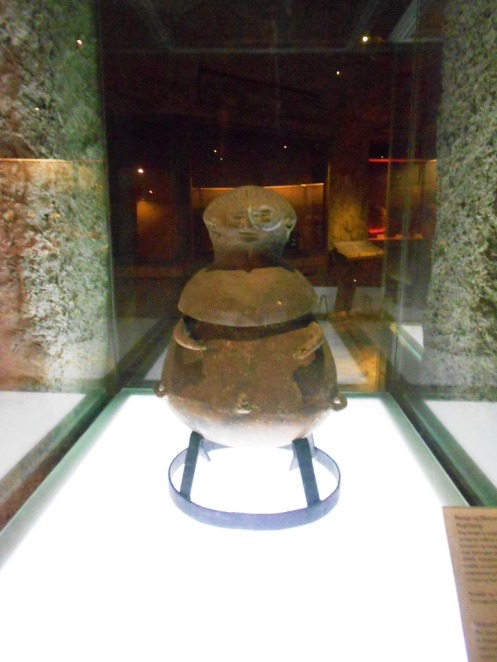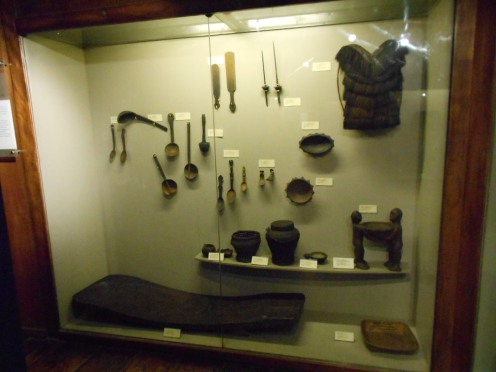ARCHAEOLOGICAL TREASURE
By unknowing our Cultural Heritage early is like an abandoned child whose parents went away at the child’s tender age. Upon reaching maturity, the nerve of finding one’s true identity is something that’s bothersome. Many hanging questions would bob up in the mind and the feeling of being incomplete is like a trailing shadow that would never leave behind. Thus, people of a certain country whose ancient past they do not know are more vulnerable to being unpatriotic than to those who does.
Thanks to our archaeologists. Through them, they were able to study the evidence (the remains of things people have left behind or thrown away) to find out human cultures of the past. These remains that people have left behind are often dug in the ground because that is where the past most often buried. But the kind of digging archaeologists do is very scientific. They have to record exactly where buildings and objects are found and study them to learn about past civilization.
In my country which is the Philippines, the archipelago was formed about 70 million years ago through the volcanic eruption and tectonic activities. The continents of the world sit on shifting plates. Pressure from inside the earth pushed various plates against one another that reshaped the land and led to the formation of new landmass, mountain chains, volcanoes and sometimes the emergence or disappearance of islands.
During the last 2 to 3 million years the ancestors of human evolved in Africa and Asia and spread to the other parts of the world. The earliest evidence of the presence of people in my country can be dated to 750,000 years ago, during the Pleistocene epoch. This came in the form of stone tools and fossils of large migrating animals such as elephas, stegodons, rhinoceros and giant turtles found in Palawan and Cagayan Valley. This discovery provides valuable information about ancient human, their environment and strategies for survival. Humans led a mobile existence, hunting and gathering, living in canvas and using fire and stone tools.
Archaeological evidence of the Neolithic Period showed that life ways of the people had changed a great deal from earlier times. It was identified through the changes of the stone tools’ shape that they used to prey. From archaeological sites now began appearing polished stone tools primarily blade-like tools, stone adze, shell adze and red slipped pottery. If before humans only gathered food from nature, they learned how to domesticate plants and animals. However, hunting and gathering was still a successful form of subsistence during the Neolithic.
Another great change took place in the islands as shown in the materials that were found from archaeological sites. By this time, the use of metals had already become widespread. The earliest metals to appear were gold, copper and bronze in the form of ornamental beads and tools like adzes and spearheads. This period is known not only for the appearance of metals, but also as the Golden Age of Pottery. While the pieces produced in the previous age were indeed beautiful, pottery from the Metal Age is characterized by exquisite and intricate patterns and designs reflecting complex societies. Among the highlights of the Metal Age are burial jars which indicate the burial custom practiced by the ancient people of the period.
A new change took place in 1000 A.D. From the archaeological sites, the age is distinguished by the appearance of high-fired ceramics. This gave proof to the increased maritime trade and cultural contact between my country and her Southeast Asian neighbors. The quantity of Asian trade materials appear to be greater in the southern parts of the country. Under water archaeological evidences indicate the existence of trade routes that brought the products of the Spices Islands (the Moluccas) up from the South, and the luxuriously manufactured items of China mainland, especially silk and porcelain, directly to Filipino harbors.
THE FILIPINOS AND THEIR RICH CULTURAL HERITAGE
Philippine Islands are a land of diversity, crossroads, and a tapestry of cultures. Some regions that have been influenced by migration over the millennia, while others have developed in relative isolation, locked in by the roughness of the terrain and adapting to their distinct environment. These cultural influences, adaptations and response to the environment led to the emergence of major ethno linguistic groups with many sub-groups. Having a common prehistory and background, all ethnic groups in the Philippines speak languages that belong to the Austronesian family. It is the variety with adaptive techniques and cultural diversity throughout the archipelago that make the Philippines unique.
Knowing our ancient Cultural Heritage is like knowing the achievement of our ancestors. It is a non-renewable resource which must be protected and properly managed. To this day, archaeological sites are being looted and destroyed by illegal treasure hunters. With the destruction of our Cultural Heritage, our link to the past is lost. There are many benefits that can be gained through the protection of our heritage site and that include tourism, education and scientific application. The pictures posted above are my few shots taken when I’ve had the chance to visit National Museum lately.



























Because the admin of this web site is working, no doubt very quickly it
will be renowned, due to its feature contents.